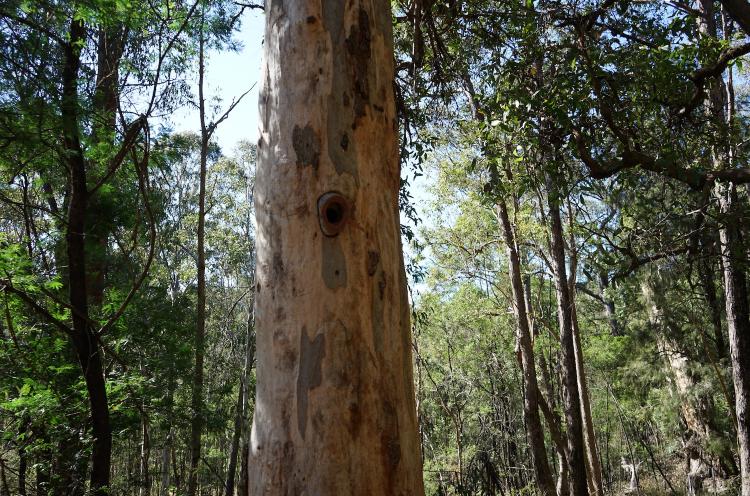
World-first technology is being used to rebuild natural habitats destroyed by bushfires, creating more than 800 new hollows that will provide displaced animals with a space to nest and roost for an accumulated 56,000 years.
Minister for Regional Transport and Roads Paul Toole said the 2019/20 bushfires destroyed 5.5 million hectares of tree hollows that possums, gliders, micro-bats and birds use for breeding, shelter and protection.
“The catastrophic Black Summer bushfires caused extensive damage across the state and while Transport for NSW has done an incredible job to knock the road network back into shape to restore access for our regional communities, the natural habitat is still bouncing back,” Mr Toole said.
“Hollows naturally form in trees that are more than 70 years old, so losing habitat trees in a bushfire has a devastating impact on the mammals, reptiles and birds that use those hollows for shelter and breeding.
“The NSW Government has invested $165,000 to carve tree hollows using ‘Hollowhog’, a new tool that has minimal impact on the health and integrity of the tree, and is faster and less invasive than the alternative chainsaw method.
“This is the first time this technology has ever been used in the world – and I’m so excited to today release footage that shows just how much the animals are already taking a keen interest in these new hollows.
“Creating hollows in mature trees is important as 15 per cent of Australian fauna rely on them for nesting and habitation – that’s more than a quarter of reptiles like goannas, geckos and pythons, 17 per cent of birds, and about 30 per cent of mammals.”
Environment Minister, Matt Kean said the catastrophic bushfires of 2019-20 had a devastating impact on our native wildlife, estimated to have killed or displaced billions of animals.
“Unfortunately, we know the risk of more intense and more frequent bushfires is a real possibility due to climate change,” Mr Kean said.
“This cutting edge technology will help our native animal species to recover from the impact of fire by providing breeding habitat so animal populations can bounce back.”
The Hollowhog is an Australian invention by Transport for NSW Environment Officer and conservation biologist Matt Stephens, who has spent 10 years solving the problem of how to create durable homes for wildlife.
“I enlisted the help of an engineering company and have extensively trialled and refined the tool over the past two years,” Mr Stephens said.
“It’s the first tool of its kind and combines hardened steel and tungsten carbide cutting blades to provide the safest and most efficient way to carve a large cavity through a small hole, meaning that the tree’s living parts are left intact.
“My goal is to continue to work with government and conservation organisations, here and around the world, to install more than one million hollows over the next few years.”
Transport for NSW is committed to minimising its impact on biodiversity and regularly investigates ways to protect the natural habitat, including through its offset requirements with rehabilitation programs along travelling stock routes, in National Parks and on private property conservation areas.
Hollowhog is an innovative way to build resilience and offset the cumulative impact of minor works and projects, and the devastating impact of bushfires.
Habitat is being replaced at the following 20 locations in regional NSW:
- Glen Innes (travelling stock route),
- Port Stephens (Aboriginal protected area),
- Yarras/Mount Seaview (private property conservation areas),
- Tucabia (private property conservation areas.),
- Rappville (three private property conservation areas),
- Marengo/Nymboida (private property conservation areas) ,
- Woolgoolga (private property conservation area),
- Brooms Head (Yuraygir National Park),
- Grafton (private property conservation areas),
- Pillar Valley (two private property conservation areas),
- Adelong/ Tumut (travelling stock route),
- Adelong and Clybucca (offset property).
